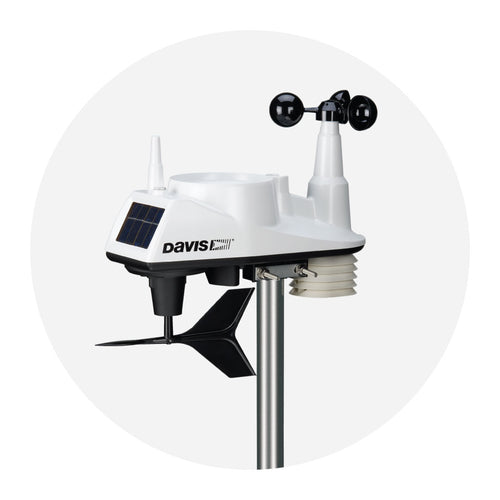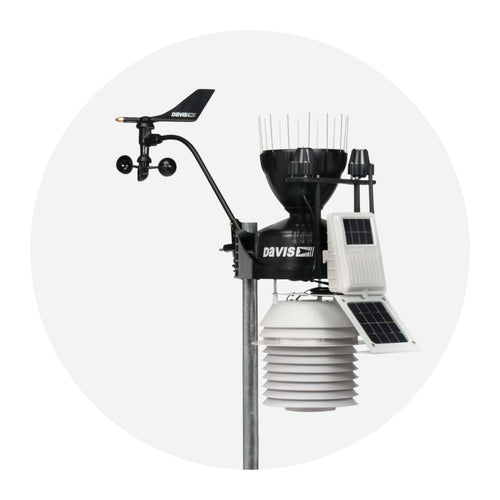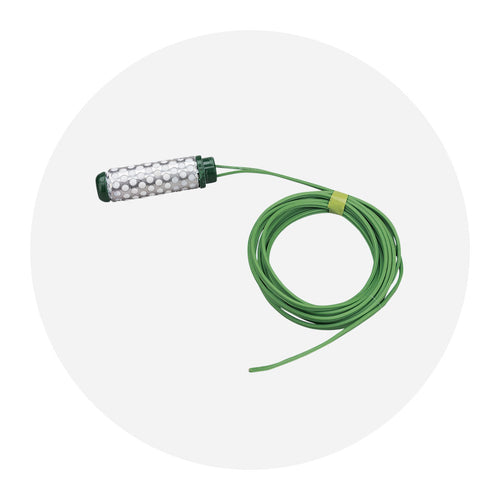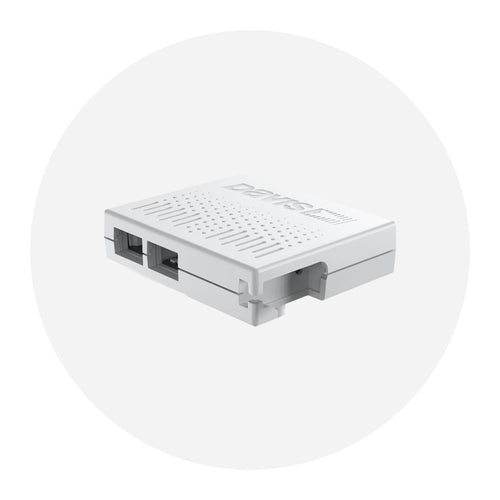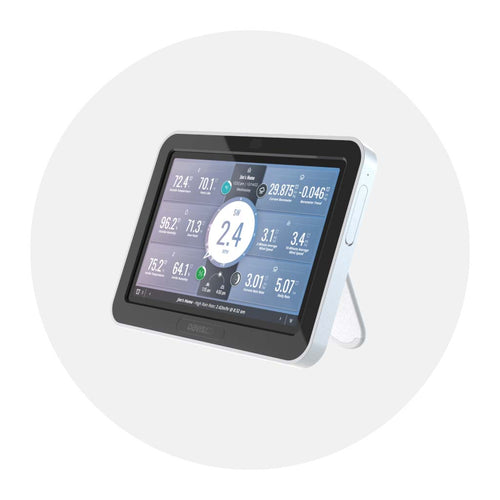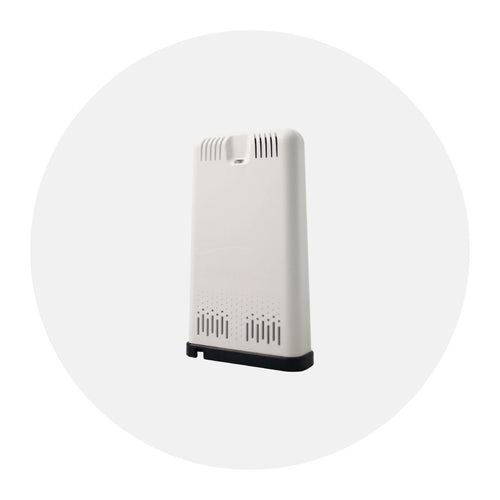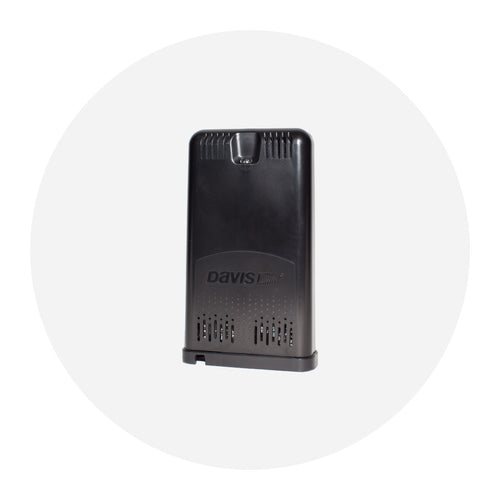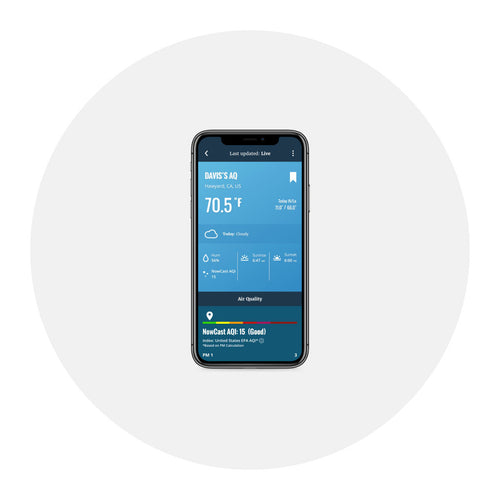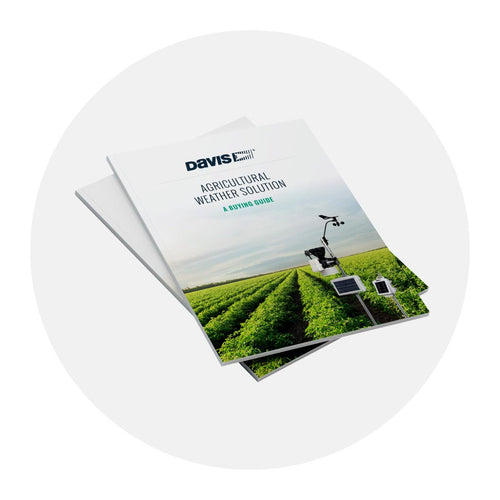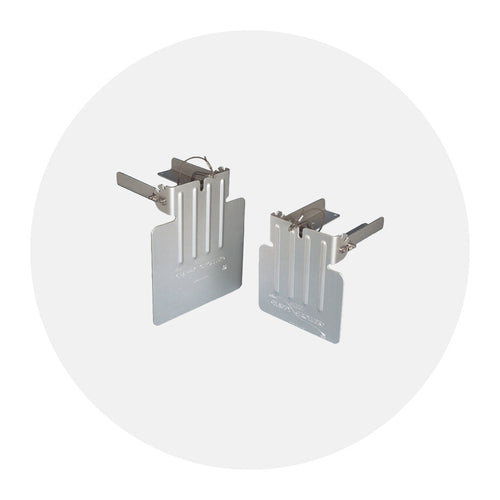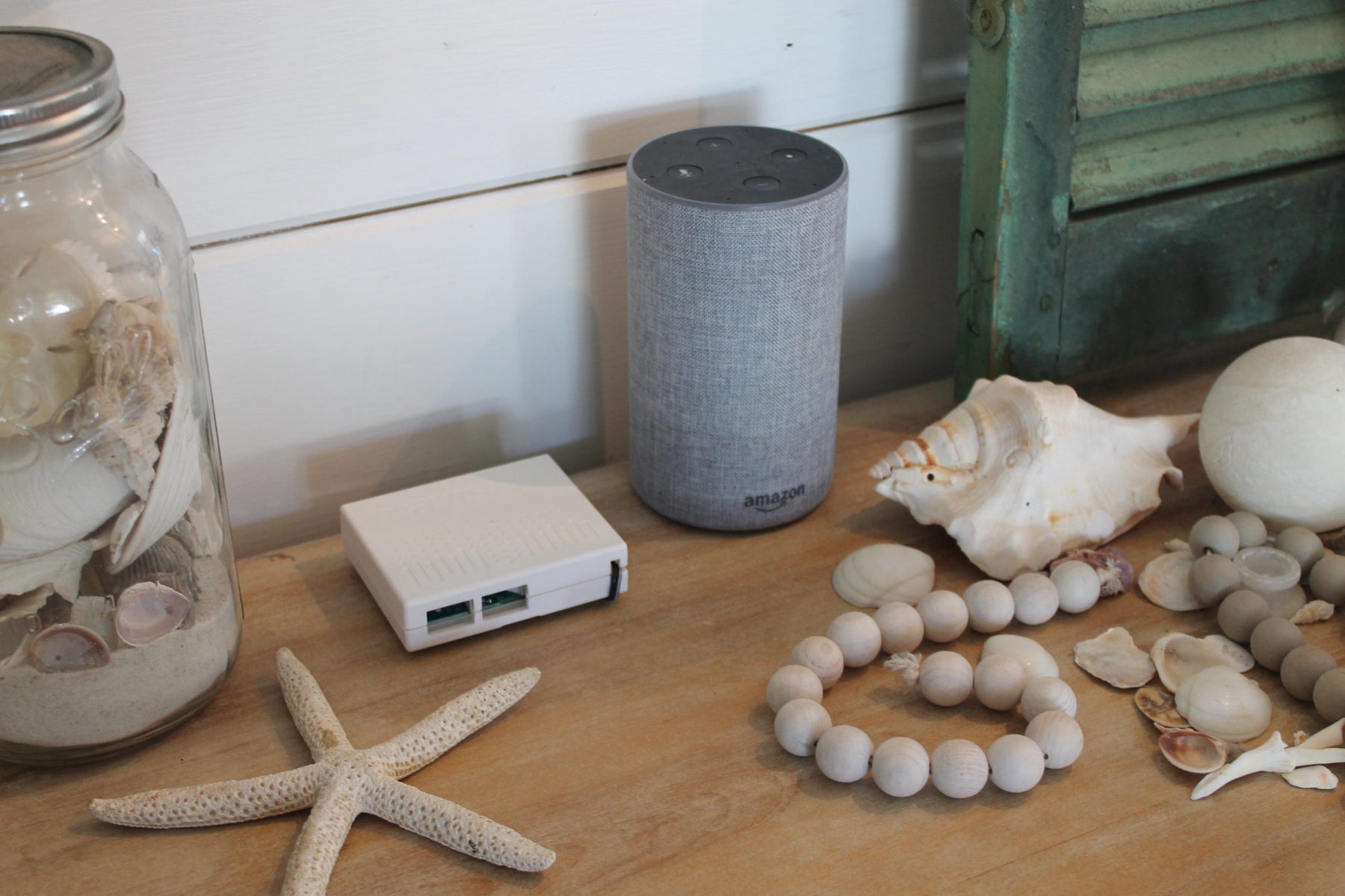
What is Air Quality?
There is a well-known story about a young monk learning to meditate. He complains that “just breathing” is boring. His teacher asks him to put his head in a bucket of water and keep it there for 5 minutes. The youngster fails -- but has a sputteringly profound new appreciation for breathing.
Breathing maybe mundane as long as you are breathing clean air. Davis's AirLink Professional Air Quality Monitor can help you know if the air you breathe is safe.
Breathing is easy to ignore. We do it over 23,000 times a day, even sound asleep. And that stuff we breathe? The invisible air we thoughtlessly pull down into our lungs and brachial tubes? We can ignore that too, right?
Yes, until we can’t. If your head is in a metaphorical bucket of water because you have asthma, COPD, or other respiratory illness, you don’t take breathing for granted. If the air you must breathe, even with healthy lungs, smells like smoke or hazes the horizon gray, you don’t take breathing clean air for granted either.
RECAP TAKE-AWAYS:
We all gotta breathe, but we don't control what's in the air. Breathing polluted air can be harmful to your health.
AIR POLLUTION IS BOTH INDOORS AND OUTDOORS

Since polluted air can look, taste, feel, and even often smell just like clean air, how can we know the quality of the air we breathe?
The air in that last breath you took was not even mostly oxygen. If it was, you’d be in trouble if you breathed it for too long. That breath was about 78% nitrogen; oxygen made up only 21% of it. But you also breathed in argon, water, carbon dioxide, ozone, methane, helium, hydrogen, and a selection of many other not-so-savory gases, chemicals, and particulates.
Along with oxygen and nitrogen, in every breath you breathe in particles of dust, smoke, dirt, pollen, dead skin cells, and air-born germs like bacteria, fungi, molds, and viruses. When you breath indoors, there are VOCs (volatile organic compounds) that can be either man-made or natural, as well as nitrous oxide from gas cooktops, ovens, and heaters. Outdoors you might breathe in soot, smoke, ash, metals and other pollutants such as carbon monoxide from cars and industries, benzene, black carbon, asbestos, ammonia, and sulfur dioxide.
While all these unsavory things constitute “air pollution,” air quality can be measured by the concentration of particulate matter (aerosols) in the air because they are the single greatest threat to health.
Some larger particles are easily filtered out by the nose, sinuses, trachea, and bronchial tubes. But very small particles can get by all these filters. In the lungs, the bronchial tubes branch out into tinier and tinier tubes. The smallest tubes, the bronchioles, end in the alveoli where oxygen is diffused to the blood stream and carbon dioxide is diffused back into the lungs for exhaling. Particles that are so small they reach deep into the maze of bronchial tubes and even into the blood stream are those in the PM2.5 and smaller size range. While particles as big as 10 micrometers can be inhaled, those smaller than 2.5 micrometers (1/30 the size of a human hair) are the most dangerous.
RECAP TAKE-AWAYS:
Oxygen is a small part of the air you breathe. Tiny particles (PM2.5) in the air can be inhaled deep into the lungs and can even get into your bloodstream.
WHAT ABOUT WOODSMOKE?

Many parts of the world are experiencing increasing numbers of wildfires. The western portion of the United States for example, at the time of this writing (August 2021) currently has 107 large, active fires in 13 western states and Alaska. According to the National Interagency Fire Center, the United States National Preparedness Level is 5 (on a scale of 1 to 5). Another 300 or so are burning in British Columbia. Sadly, this year is a continuation of years past and the future is expected to bring more of the same. Smoke is pouring into the skies over these mostly rural fires, but it does not stay there. Plumes rise to very high altitudes where the smoke can be carried for thousands of miles and dropped down over urban areas where it mixes with other pollutants and causes dangerous AQI. Today, people on the east coast of the United States are inhaling air polluted by woodsmoke from the fires burning in western states.
Although people often find the aroma of woodsmoke pleasant, their lungs do not. Woodsmoke, as it turns out, is toxic. A recent study has linked not just asthma to woodsmoke, but an almost 7% increase in cardiac arrests. Extensive evidence from epidemiologic studies focusing on exposure to fine particles (PM2.5) such as those produced by wildfires demonstrates increased risk of emergency department visits and hospital admissions for asthma and COPD (U.S. EPA, 2009). Besides particulate matter, woodsmoke contains benzene, carbon monoxide, VOCs, formaldehyde, acrolein, and polycyclic aromatic hydrocarbons (PAHs). Smoke that is traveling through the air is also “aging:” the sunlight and chemicals in the air are making it even more toxic. (Read more about what is so bad about woodsmoke in this article by Dr. Luke Montrose, an environmental toxicologist.)
Recent studies have indicted smoke from wildfires as a serious contributor to COVID infections and deaths. This sobering new information should probably not surprise us. It is clear from years of research on the effect of cigarette smoking, that PM2.5 can make people more susceptible to any respiratory infection because it weakens the lung’s immunity response. If your lungs are spending all their immunity resources battling tiny particles, fighting off infection can be more than they can handle. In addition, COVID is particularly aided by smoke because it can increase the expression of the molecule COVID-19 binds to, the ACE2 receptor, in the respiratory cells. One study by Daniel Kiser, et al, conducted in Reno, Nevada during wildfire events in 2020, showed that “a 10 µg/m3 increase in the 7-day average PM2.5 concentration was associated with a 6.3% relative increase in the SARS-CoV-2 test positivity rate… This corresponded to an estimated 17.7% (CI: 14.4–20.1%) increase in the number of cases during the time period most affected by wildfire smoke, from 16 Aug to 10 Oct.”
If you or a family member is already struggling with asthma or heart disease, woodsmoke can be deadly. For everyone, woodsmoke is not something you want in the air you breathe.
RECAP TAKE-AWAYS:
Woodsmoke is more toxic than other forms of pollution. It can increase susceptibility to respiratory infections including COVID-19.
WHAT IS AQI?
The Air Quality Index or AQI is a rating of the air you are breathing based on the concentration of dangerous particles that are 2.5 micrometers or less in diameter (PM2.5). Davis Instruments' AirLink Professional Air Quality Monitor measures particulate matter (PM) indoors and outdoors. It measures not only PM2.5, but larger (under 10 micrometers, PM10), and smaller (under 1 micrometer, PM1) particles as well.
The United States Environmental Protection Agency (EPA) established National Ambient Air Standards for PM2.5 in 1997 (revised in 2006 and 2012). These safety standards are based on the short term (24-hour) average of 35 micrograms per cubic meter of air, and long term (annual) average of 12 micrograms per cubic meter of air.
The United States EPA AQ index assigns an index value from 0 to 500 based on the concentration of PM2.5. Index values are categorized and color-coded to give users a way to quickly assess their air quality.

Other countries use their own AQI with slightly different ranges and descriptions. AirLink allows each user to choose which AQI they want to use from a growing list:
- United States Air Quality Index (with NowCast, the EPA's standard for reflecting rapidly changing air quality)
- Air Quality Health Index (Canada)
- Metropolitan Index of Air Quality Index (Mexico)
- Common Air Quality Index (EU)
- UK Daily Air Quality Index
- India Air Quality Index
- China Individual Air Quality Index
- AIRKOREA (South Korea)
- Australian Air Quality Index

RECAP TAKE-AWAYS:
The AQI gives you quick, visual assessment of the quality of the air you breathe. Different countries use different indexes.
HOW DOES AN AIR QUALITY MONITOR WORK?
Particles in the air scatter light. AirLink uses this light-scattering to measure the size and number of particles in the air. A fan sends a controlled volume of air past the sensor where a laser shines on it. A photo detector senses the light scattered by a particle and converts it to a pulse, which can then be analyzed to determine the size of the particles and the number present in the sample.
AirLink determines the size of the particles and returns data on the concentration of particles as small as 0.3 µm and as large as 10 µm.
AirLink also includes a temperature and humidity sensor.
RECAP TAKE-AWAYS:
Light passed through an air sample is scattered by particles, allowing the sensor to measure the concentration and size of particles. AirLink measures particles as small as 0.3 µm and as large as 10 µm.
WHAT CAN YOU DO TO PROTECT YOUR HOME, SCHOOL OR BUSINESS?
It is important to everyone’s health to breathe clean air. But it is especially important for those who are young or elderly, those with respiratory issues like asthma, or cardiovascular diseases, and those who are pregnant. With the new normal of wildfires and other sources of air pollution, knowing what you and your family is breathing is crucial.
When the AQI rises, you can take steps to minimize the danger. You can stay indoors with the windows closed, for example, or run an air purifier. You can reduce adding to indoor air pollution from gas or wood stoves and fireplaces, candles, cigarettes, and vacuuming. If you must be outside, you should avoid exercising and, when warranted, wear a mask.
Installing an AirLink indoors or outdoors will guarantee that you know when to take these steps. Installing two, one outside and one inside, will allow you to see how the steps you take are helping mitigate the indoor air pollution.
Installing an AirLink outside also provides protection for you community by allowing your AQI to be accessible to the community on the WeatherLink.com air quality map.
RECAP TAKE-AWAYS:
When outdoor AQI is bad, stay indoors. Reduce air pollution inside your home. Install an AirLink outside and/or inside your home.
KNOW WHAT YOU BREATHE.
Knowing what you breathe has never been so urgent, nor luckily, so affordable and reliable. Installing an AirLink Professional Air Quality Monitor can help you provide a healthy home, work, or school environment.
In the face of escalating environmental risks, AEM is the essential source for insights on weather, climate, lightning, floods, wildfires, water management, and more.
Learn more about AEM and all of our solutions here.


